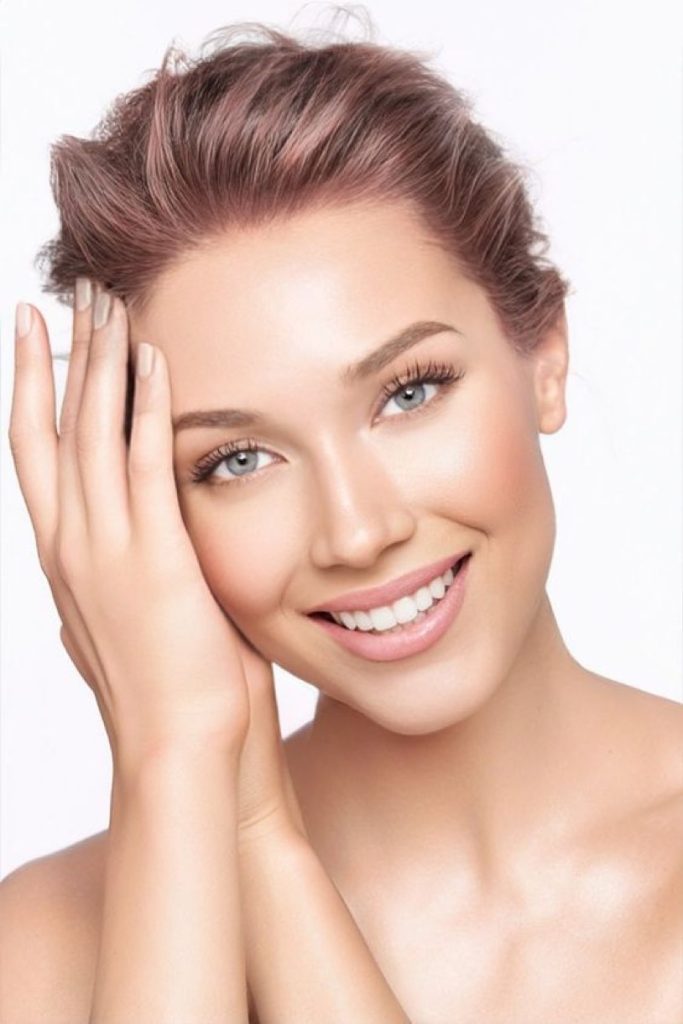

Wrinkle reduction refers to cosmetic treatments aimed at minimizing the appearance of fine lines and wrinkles on the skin.
Wrinkle reduction refers to a range of treatments and techniques designed to minimize the appearance of wrinkles and fine lines on the skin. Wrinkles naturally develop as part of the aging process due to factors like decreased collagen production, loss of skin elasticity, repetitive facial movements, and environmental influences such as sun exposure and pollution.
Wrinkle reduction techniques vary based on individual needs, with a focus on improving skin’s texture, elasticity, and smoothness.




Soften & Reduce
Restrict Movement
Shape & Symmetry
Not Just For Wrinkles
Technology
Our highly trained Medical Team of Doctors and Registered Nurses work closely with the Laser Clinics Medical Advisory Committee and Nurse Council to stay at the forefront of advancements in aesthetics, safety standards, and treatment innovations.

Smooth & Prevent Wrinkles
Restrict Muscle Movement to Minimize Wrinkles
Enhance Facial Contours & Symmetry
Treat Non-Cosmetic Issues (e.g., Excessive Sweating)
Advanced Technology for Customized Treatments
Expert Medical Team Ensuring Safety & Effectiveness
Non-Invasive, Quick Treatment with Minimal Downtime
Long-Lasting Results with Regular Maintenance
Safe, Personalized Approach Tailored to Your Needs

The total time needed for a wrinkle reduction project depends on the combination of treatments used, but generally, it can take 30 minutes to 2 hours in one session.

Inject anti-wrinkle agents

Soften wrinkles

Smooth wrinkles

Post-Treatment Care Guidelinees for Wrinkle Reduction
Post-Treatment Care Guidelinees for Wrinkle Reduction

Avoid Sun Exposure
Stay out of direct sunlight for at least 48 hours, apply SPF 30+ sunscreen, and wear protective clothing when outdoors to prevent irritation.

Avoid Over-Moisturizing
Use a gentle moisturizer sparingly to prevent irritation while supporting the filler’s effects.

Avoid Sauna and Steam
Refrain from saunas, hot tubs, or steam rooms for 48 hours to avoid increased swelling and to protect the filler’s longevity.

Avoid Sun Exposure
Stay out of direct sunlight for at least 48 hours, apply SPF 30+ sunscreen, and wear protective clothing when outdoors to prevent irritation.

Avoid Over-Moisturizing
Use a gentle moisturizer sparingly to prevent irritation while supporting the filler’s effects.

Avoid Sauna and Steam
Refrain from saunas, hot tubs, or steam rooms for 48 hours to avoid increased swelling and to protect the filler’s longevity.

Avoid Intense Exercise
Skip strenuous exercise for 24-48 hours to reduce swelling and bruising.

Avoid Heavy Makeup Application
Avoid applying makeup to the treated area for at least 24 hours, and if necessary, use clean tools to prevent irritation.

Avoid Friction or Massage
Refrain from massaging or putting pressure on the treated areas for 24 hours to ensure the filler stays in place.

Avoid Intense Exercise
Skip strenuous exercise for 24-48 hours to reduce swelling and bruising.

Avoid Heavy Makeup Application
Avoid applying makeup to the treated area for at least 24 hours, and if necessary, use clean tools to prevent irritation.

Avoid Friction or Massage
Refrain from massaging or putting pressure on the treated areas for 24 hours to ensure the filler stays in place.

Here are some frequently asked questions (FAQs) about Wrinkle Reduction.
Are dermal fillers effective for wrinkle reduction?
Yes, dermal fillers, such as hyaluronic acid, work by adding volume to the skin and filling in areas that have lost elasticity and volume. They are often used for deeper wrinkles and areas where skin sagging is evident, like nasolabial folds or marionette lines. Results can last from 6 months to 2 years, depending on the type of filler used.
What is the downtime after wrinkle reduction treatments?
Downtime varies depending on the treatment. Botox usually requires little to no downtime, with most people returning to their daily activities immediately after the procedure. Dermal fillers may result in mild swelling or bruising, which typically resolves within a few days.
Are wrinkle reduction treatments safe?
When administered by a trained professional, wrinkle reduction treatments such as Botox and dermal fillers are considered safe. However, like any cosmetic procedure, there are risks, including bruising, swelling, or an allergic reaction. Always consult with a licensed professional and discuss any medical conditions beforehand.
How long do the results last?
The results depend on the type of treatment. Botox typically lasts 3–6 months, while dermal fillers can last anywhere from 6 months to 2 years, depending on the product used and the area treated. Maintenance treatments are necessary to keep results.
What are the alternatives to injectable wrinkle reduction treatments?
Alternatives to injectable treatments include laser resurfacing, chemical peels, and microdermabrasion. These treatments focus on improving skin texture and stimulating collagen production to reduce the appearance of wrinkles without the need for injections.
Who is a good candidate for wrinkle reduction?
Ideal candidates are individuals looking to reduce the appearance of fine lines and wrinkles caused by aging or environmental factors. People with realistic expectations, no history of skin allergies or autoimmune diseases, and generally healthy skin are suitable candidates.
Can wrinkle reduction treatments be combined with other procedures?
Yes, wrinkle reduction treatments like Botox and dermal fillers can be combined with other procedures, such as chemical peels, laser treatments, or skin tightening procedures. Combining treatments can enhance overall results by targeting different causes of aging and improving skin texture and tone.
Are the results of wrinkle reduction treatments immediate?
Botox results typically take 3–7 days to become fully visible as it takes time for the muscle-relaxing effect to set in. Dermal fillers often provide immediate results, with the skin appearing smoother and plumper right after the procedure. However, swelling or bruising may temporarily affect the final appearance.
Can wrinkle reduction treatments be used for all wrinkles?
Wrinkle reduction treatments are most effective for dynamic wrinkles, which are caused by muscle movement, such as frown lines, crow’s feet, and forehead lines. Static wrinkles, which are deeper lines that form over time even without muscle movement, can be treated with dermal fillers for more dramatic results.



